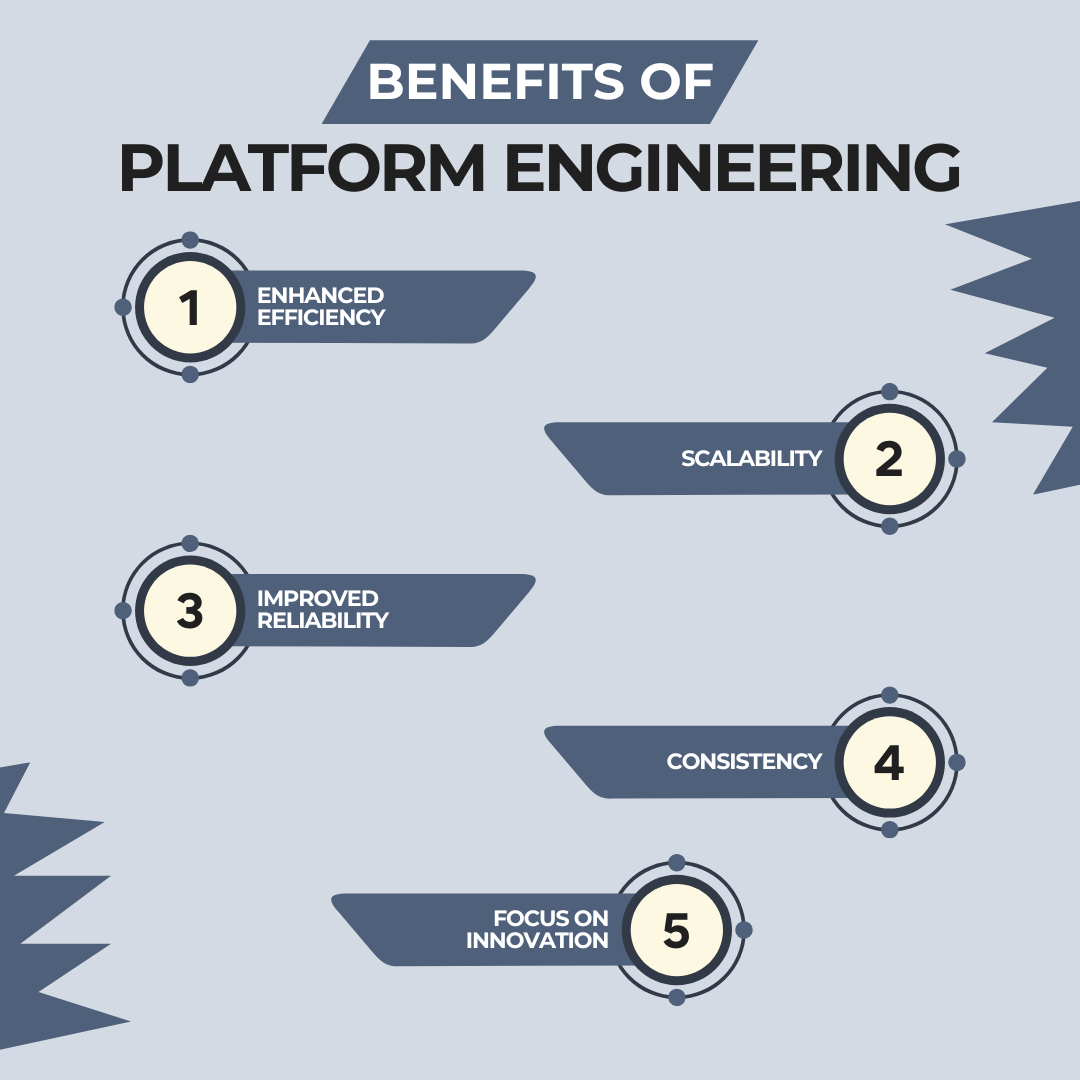Introduction
In today’s rapidly evolving tech landscape, managing complex software systems can overwhelm development teams, leading to inefficiencies and deployment issues. As cloud-native environments grow, the need for robust, scalable solutions intensifies.
Platform engineering emerges as the key to tackling these challenges by streamlining infrastructure management and automating processes. By adopting platform engineering practices, teams can enhance efficiency and ensure consistency, paving the way for more reliable and scalable software development.
History and Evolution of Platform Engineering
Platform engineering has evolved significantly since its inception, adapting to the changing needs of software development. Early practices in platform engineering were heavily influenced by traditional IT operations and system administration.
Initially, these practices focused on managing physical hardware and manually configuring software environments, which often led to inconsistent and error-prone deployments.
As the technology landscape shifted towards virtualization, the introduction of virtualization platforms marked a pivotal change. Virtual machines allowed for more flexible resource allocation and isolation, laying the groundwork for modern platform engineering.
The advent of cloud computing further accelerated this evolution, offering on-demand resources and scaling capabilities that transformed how platforms were managed and deployed.
The emergence of Infrastructure as Code (IaC) during the mid-2010s marked a pivotal advancement. IaC tools like Terraform and Ansible enabled developers to define and manage infrastructure through code, promoting automation and consistency. This shift reduced manual configuration tasks and facilitated more efficient deployment processes.
Automation and Continuous Integration/Continuous Deployment (CI/CD) practices became integral as organizations sought to accelerate development cycles and improve software quality. Tools such as Jenkins and GitLab CI streamlined the process of integrating code changes and deploying updates, making it easier to maintain and scale platforms.
Today, platform engineering continues to evolve with advancements in containerization, microservices architecture, and observability. Containers, orchestrated by platforms like Kubernetes, have revolutionized how applications are built and managed, offering greater flexibility and scalability.
Monitoring and observability tools have also become essential, providing deeper insights into system performance and helping to ensure reliability.
Core Components of Platform Engineering
Platform engineering encompasses several core components that collectively enhance the efficiency, scalability, and reliability of software development. Each component plays a crucial role in managing complex systems and ensuring seamless operations.
Infrastructure as Code (IaC) is foundational in platform engineering. By defining infrastructure through code, tools like Terraform and Ansible allow teams to automate and version-control their infrastructure setups. This approach reduces manual errors, accelerates provisioning, and ensures consistency across different environments.
Automation and CI/CD are crucial pillars of today’s development practices. Automation tools and CI/CD pipelines, like Jenkins and GitLab CI, simplify the integration of code changes, execution of tests, and application deployment.
This automation minimizes manual intervention, speeds up release cycles, and enhances the reliability of deployments by catching issues early in the development process.
Monitoring and Observability are vital for maintaining system health and performance. Tools like Prometheus and Grafana provide real-time insights into application metrics and infrastructure status.
Effective monitoring helps in proactively identifying and resolving issues, while observability allows for deeper analysis of system behavior, aiding in debugging and performance optimization.
Security Considerations are essential to safeguarding platforms. Implementing best practices and leveraging tools such as HashiCorp Vault for secrets management and automated security scans help protect against vulnerabilities. Integrating security into the platform engineering process ensures that security is not an afterthought but a continuous aspect of development and operations.
Benefits of Platform Engineering
Platform engineering offers a multitude of benefits that significantly enhance the efficiency and effectiveness of software development. By integrating advanced tools and practices, organizations can experience transformative improvements in their operations.
Enhanced efficiency stands out as one of the key benefits. Platform engineering simplifies and automates multiple facets of infrastructure management and deployment workflows.
Through Infrastructure as Code (IaC) and CI/CD pipelines, manual tasks are minimized, and repetitive processes are automated. This leads to faster development cycles, fewer errors, and more consistent deployments, allowing development teams to focus on innovation rather than routine maintenance.
Scalability is another key benefit. As applications and user demands grow, platform engineering practices facilitate seamless scaling of resources. Cloud-based platforms and containerization technologies enable organizations to dynamically adjust their infrastructure to meet changing needs without significant overhead. This scalability ensures that systems can handle increased loads and adapt to evolving business requirements, providing a flexible foundation for growth.
Consistency and Reliability are also enhanced through platform engineering. Automated and repeatable processes reduce the likelihood of human error and ensure that environments are configured uniformly.
By implementing monitoring and observability tools, teams can proactively identify and resolve issues, ensuring a seamless user experience. This consistency leads to more stable and reliable applications, which are crucial for maintaining user trust and satisfaction.

Challenges and Solutions in Platform Engineering
While platform engineering offers numerous advantages, it also presents several challenges that organizations must address to fully realize its benefits.
Managing Complexity is a primary challenge in platform engineering. Modern platforms often involve a wide array of interconnected components, which can create complex environments that are difficult to manage and troubleshoot.
To mitigate this, organizations can adopt modular design principles and leverage tools that provide comprehensive visibility into system operations. Implementing Infrastructure as Code (IaC) and using containerization technologies can also help simplify management by standardizing configurations and isolating components.
Integration Issues can arise when integrating new platform engineering practices with existing systems. Legacy systems and diverse technology stacks may not always align seamlessly with modern platforms, leading to compatibility problems and integration challenges.
To address these issues, organizations should focus on gradual integration strategies and use middleware or API gateways to bridge gaps between systems. Additionally, investing in robust testing frameworks can help identify and resolve integration issues early in the process.
Skill Requirements represent another significant challenge. Platform engineering often demands specialized knowledge in areas such as automation, cloud infrastructure, and security. This skill gap can hinder successful implementation and operation.
To overcome this, organizations should invest in training and upskilling programs for their teams. Partnering with experienced consultants or leveraging managed services can also provide valuable expertise and support.
Case Studies and Examples of Platform Engineering
Examining real-world implementations of platform engineering can provide valuable insights into its practical benefits and challenges. Here are a few notable examples that highlight successful platform engineering practices and lessons learned.
Successful Implementations:
- Netflix: As a pioneer in cloud computing and microservices, Netflix leveraged platform engineering to manage its vast and dynamic infrastructure. By adopting a microservices architecture and employing automation tools like Spinnaker for continuous delivery, Netflix achieved high availability and scalability. This strategy enabled Netflix to manage millions of concurrent users while maintaining fast deployment and robustness against failures.
- Uber: Uber's platform engineering strategy focused on scaling its services to accommodate rapid growth and global expansion. By utilizing container orchestration with Kubernetes and implementing comprehensive monitoring with tools like Prometheus, Uber successfully managed its complex, distributed system. This enabled the company to maintain performance and reliability across a diverse set of services and regions.
Lessons Learned:
- Avoid Overcomplicating Solutions: Both Netflix and Uber faced challenges with managing the complexity of their systems. They learned the importance of balancing innovation with simplicity to avoid over-engineering. Clear documentation and modular designs were crucial in managing complexity and ensuring maintainability.
- Continuous Improvement: Successful implementations highlight the need for ongoing evaluation and refinement. Both companies regularly updated their tools and practices to keep pace with technological advancements and emerging challenges. This iterative approach allowed them to continuously improve their platforms and address evolving requirements.
Future Trends and Innovations in Platform Engineering
The field of platform engineering is rapidly evolving, driven by emerging technologies and evolving business needs. Several key trends and innovations are shaping the future of platform engineering and will likely influence its trajectory.
Emerging Technologies:
Artificial Intelligence and Machine Learning: AI and ML are increasingly being integrated into platform engineering to enhance automation, predictive maintenance, and anomaly detection.
Machine learning algorithms can analyze vast amounts of data to identify patterns and predict potential issues before they impact system performance. This proactive approach helps in optimizing resource allocation and improving overall system reliability.
Serverless Computing: Serverless architecture is gaining traction as it allows developers to build and run applications without managing servers. By abstracting the underlying infrastructure, serverless computing enables more focus on application logic and reduces operational overhead.
This trend supports a more flexible and cost-effective approach to platform engineering, especially for dynamic and event-driven workloads.
Predictions for the Future:
Increased Use of Edge Computing: As the demand for low-latency applications grows, edge computing is becoming more prominent. Edge computing minimizes latency and enhances performance by processing data closer to its source, making it ideal for applications that rely on real-time data processing.
This shift will drive new approaches to platform engineering, focusing on distributed systems and managing edge infrastructure.
Enhanced Security and Compliance: With growing concerns over data breaches and regulatory requirements, future platform engineering will place a greater emphasis on integrated security and compliance measures.
Advanced security practices, such as zero-trust architectures and automated compliance checks, will become standard to protect against threats and ensure adherence to regulatory standards.
Key Takeaways
- Platform Engineering Enhances Efficiency: Automates infrastructure management and deployment, speeding up development cycles and reducing errors.
- Scalability and Flexibility: Facilitates dynamic scaling and adapts to growing demands through cloud-based and containerization technologies.
- Complexity Management: Requires modular design and robust tools to handle the complexity of modern systems and integrations.
- Continuous Improvement and Adaptation: Emphasizes the importance of ongoing evaluation and updates to stay current with technological advancements.
- Future Trends: Includes advancements in AI, serverless computing, edge computing, and enhanced security practices to drive platform engineering forward.
Conclusion
Platform engineering is pivotal for modern software development, streamlining operations through automation, scalability, and enhanced reliability. It addresses complex system management and integrates emerging technologies to drive efficiency and adaptability.
As the field evolves, staying informed about innovations and best practices will be crucial for leveraging its full potential and achieving continued success.

